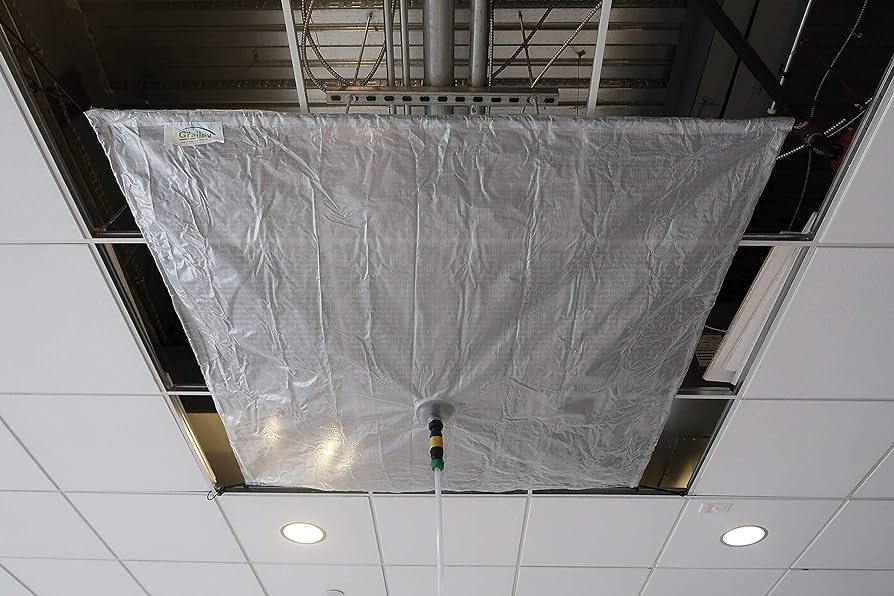Discover the importance of a ceiling tile leak diverter and learn how to effectively use this essential tool to protect your property from water damage caused by leaks and drips.

Introduction
Water leaks can cause significant damage to ceilings, walls, and other structures in your home or workplace. When it comes to addressing leaks from overhead sources, such as roof leaks or plumbing issues, a ceiling tile leak diverter is an invaluable tool for containing and redirecting water away from sensitive areas. In this comprehensive guide, we’ll explore the role of a ceiling tile leak diverter, how it works, and best practices for its use to prevent water damage and maintain the integrity of your property.
Understanding the Ceiling Tile Leak Diverter
A ceiling tile leak diverter serves as a specialized device designed to capture and redirect water from leaking ceilings to a designated drainage point. It consists of a durable tarp or plastic sheeting suspended from a frame, with a flexible hose or tubing attached to channel water away from the affected area. These diverters are available in various sizes and configurations to accommodate different ceiling layouts and leak severity.
The Role of a Ceiling Tile Leak Diverter
The primary purpose of a ceiling tiles leak diverter is to prevent water damage by containing and redirecting leaks away from sensitive areas. By capturing water before it has a chance to saturate ceiling tiles or penetrate underlying structures, a leak diverter helps minimize the risk of mold growth, structural damage, and costly repairs. Additionally, diverting water away from occupied areas helps maintain a safe and comfortable environment for occupants.
How Does a Ceiling Tile Leak Diverter Work?
A ceiling tile leak diverter works by positioning the diverter directly beneath the source of the leak and allowing water to collect in a designated catchment area. A flexible hose or tubing, attached to the diverter, channels the water and directs it to a drainage point, such as a floor drain or collection bucket. This process effectively prevents water from spreading beyond the affected area and provides temporary relief until permanent repairs can be made.
Using a Ceiling Tiles Leak Diverter: Best Practices
When using a ceiling tiles leak diverter, it’s essential to follow these best practices to ensure effective water containment and damage prevention:
- Identify the Source of the Leak: Before installing a leak diverter, identify the source of the leak and address any immediate concerns, such as shutting off water supply lines or patching roof leaks.
- Select the Appropriate Size and Configuration: Choose a leak diverter that is appropriately sized and configured to accommodate the size and severity of the leak and the layout of the ceiling tiles.
- Position the Diverter Correctly: Position the leak diverter directly beneath the source of the leak, ensuring that it covers the affected area completely. Secure the diverter in place using adjustable straps or hooks.
- Monitor and Empty the Catchment Area: Regularly monitor the catchment area of the leak diverter and empty it as needed to prevent overflow and ensure continuous water containment.
- Inspect and Maintain the Diverter: Periodically inspect the condition of the leak diverter and make any necessary repairs or replacements to ensure its continued effectiveness.
Conclusion
A ceiling tiles leak diverter is an essential tool for addressing water leaks and preventing water damage in homes, offices, and commercial buildings. By understanding its role, how it works, and best practices for its use, you can effectively contain leaks, protect property assets, and maintain a safe and comfortable environment for occupants.
Read too: Exploring the Efficiency of Radiant Ceiling Heater Electric: A Comprehensive Guide